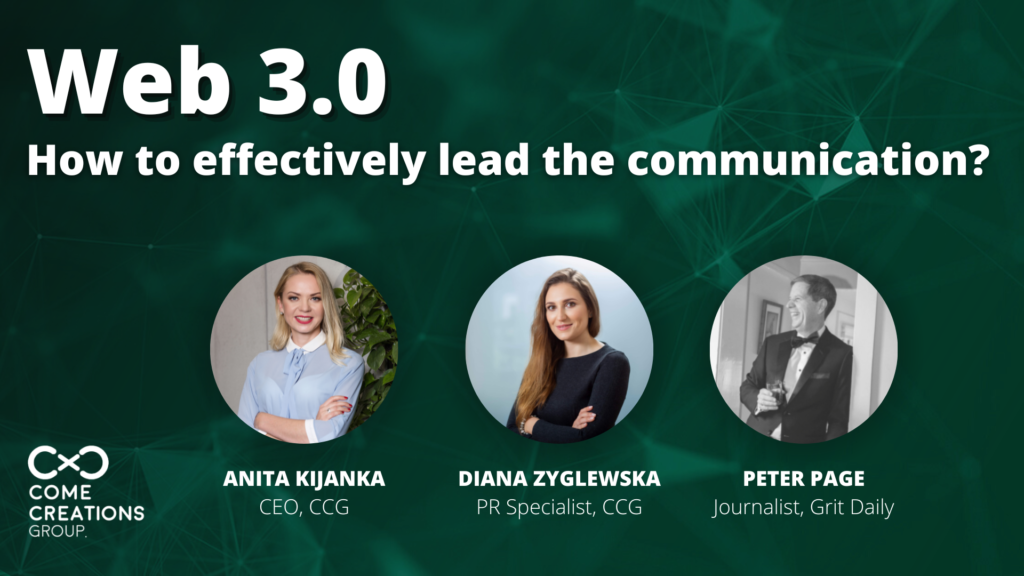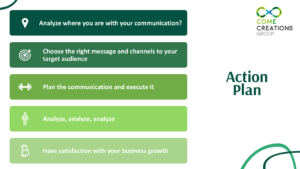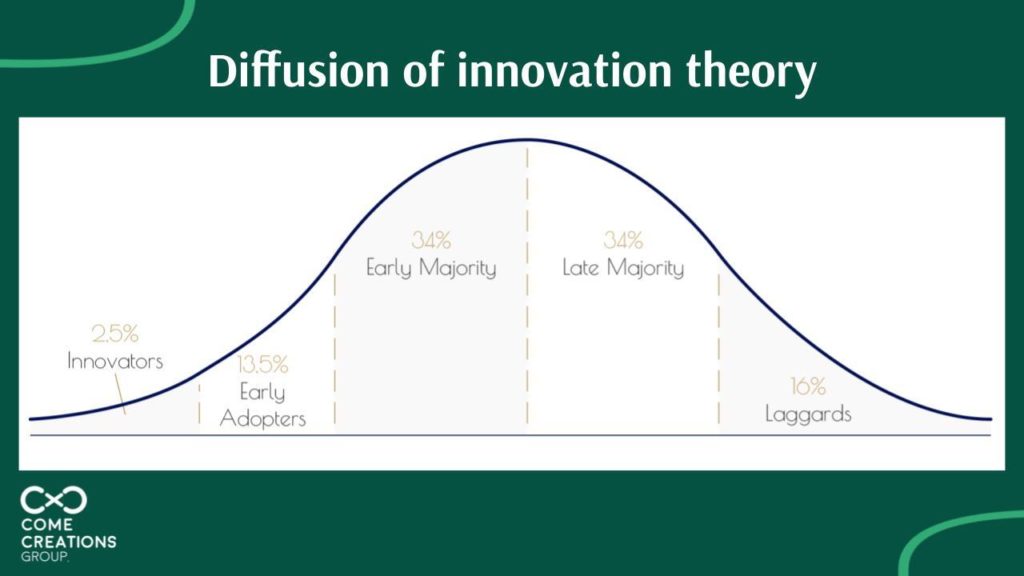Web 3.0 – How to Effectively Lead the Communication – was the first topic of our Communication Academy webinar in May. This series of events is focused on education about blockchain-based technology projects.
As part of the first online meeting, we invited a special guest – a journalist from Grit Daily News – Peter Page, who introduced some interesting insights about Web 3.0 communication from the perspective of a journalist in traditional media.

The idea to start the Communication Academy came to us instinctively. We saw the need for it in a developing market that is completely new and unknown. Since the definition of Web 3.0 is complex, we wanted to tell others that we should learn how to communicate topics related to blockchain in their businesses. We want to share our experiences as an agency and invite inspiring guests who will show us several faces of the projects they work on.
What Was Our Main Goal?
During the event, we discussed:
- How to effectively communicate difficult topics related to the Web 3.0 market;
- What is important for journalists and what kind of content they are looking for;
- How to increase the chances of articles being published;
- What materials the editors expect, and what topics they are interested in;
- The most common mistakes journalists encounter.
Who Was Our Special Guest?
We invited a person with many years of experience in journalism to this event. Peter Page is the Contributions Editor at Grit Daily. He began his journalism career as a newspaper reporter long before print journalism had even heard of the internet. He has a degree of expertise in environmental policy, the energy economy, and ecosystem dynamics.
In addition, he works in the tech portal, so we were strongly convinced that he would provide us with the most important information in a nutshell. Grit Daily News is the premier startup news hub, and is the top news source on Millennial and Gen Z startups—from fashion, tech, and influencers to entrepreneurship and funding.
So How, Why, and to Whom Should You Communicate Web 3.0 Projects?
We conducted a 30-minute interview with Peter, which revealed that journalists pay attention primarily to the personalization of emails. Peter Page emphasized that the subject of the message should immediately indicate what we want to inform our recipient about. His experience shows that it is also worth proving to a journalist that we read their website or magazine on a daily basis. Additionally, journalists often need interesting images, but not a company logo for publication, because they don’t want it to look like an advertisement.

However, it is important to check beforehand what picture sizes they publish, just to make it easier to publish for the editorial staff. He also hinted that the most important thing is that our message should be properly selected for the target group. In his opinion, it is better to send the text to a narrow group of recipients—10 seriously tech-driven people—instead of to 100 people who are not interested in the topic.
More examples of communication channels with journalists are Twitter and LinkedIn. Editors are often very active on these platforms, so you can usually reach them this way. According to Peter, this is not inappropriate; on the contrary—it is a business communication channel.
These are some of the insights from our last webinar. Of course, we agree with everything that he said about leading communication about Web 3.0 businesses, and we hope that thanks to these insights, you will communicate your projects more effectively.
How to Start Communication of Innovation
In the second part of the webinar, the CEO of our agency, Anita Kijanka, raised the topic of communication of innovation and its stages depending on the diffusion of innovation theory. Anita brings up this topic in her e-book How to Start Communication of Innovation. This e-book is addressed especially to people who would like to know what the communication of innovation is and the benefits it brings.
“Diffusion” is the stage in which information is passed on that initiates the learning process. This process involves both the developers of a given solution—who, through their activity, improve their technology—and potential customers, who check the solutions in practice and decide whether they want to use them in the future.
So, who are the recipients at each stage of innovation development, and what kind of communication do they need? E.M. Rogers categorized people based on their readiness and their openness to the implementation of innovation. The groups separated in this way are Innovators, Early Adopters, Early Majority, Late Majority, and Laggards.

Summary
If you want more education and insights about blockchain-based technology projects, follow us on LinkedIn and join our Communication Academy. Every month we talk about something else. In June we will look closer at building community, including the use of platforms such as Discord. In the future, we will also discuss privacy, security, DAO, and NFT.

What’s more, if you would like to get the e-book How to Start Communication of Innovation or need to create or discuss your brand’s communication strategy, contact us!